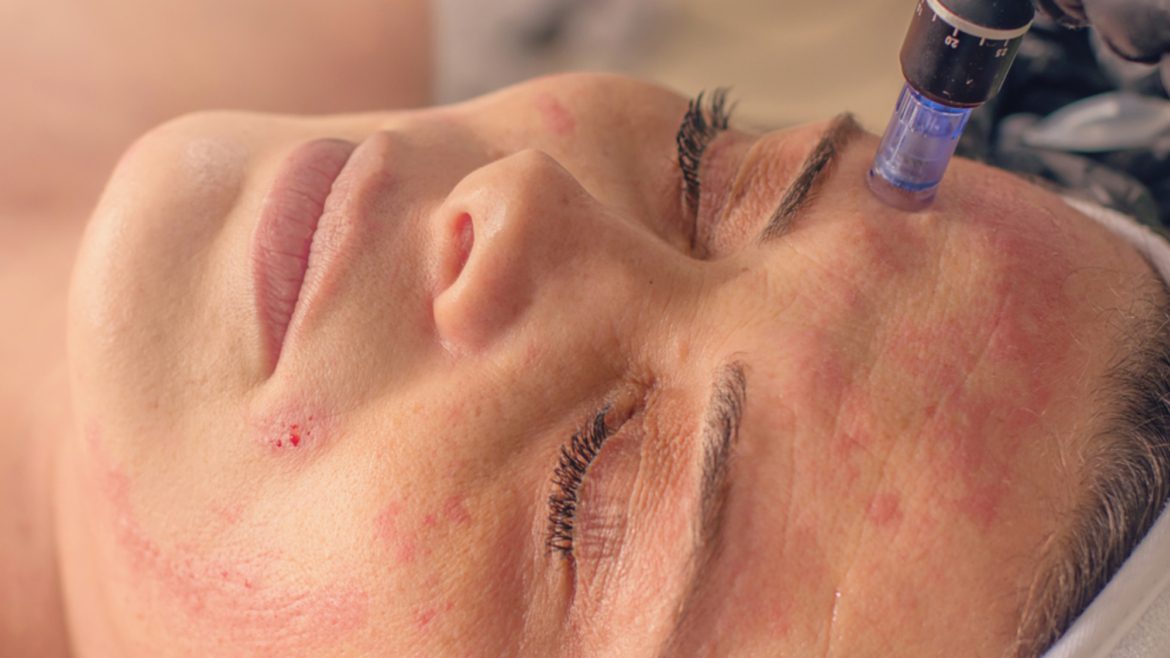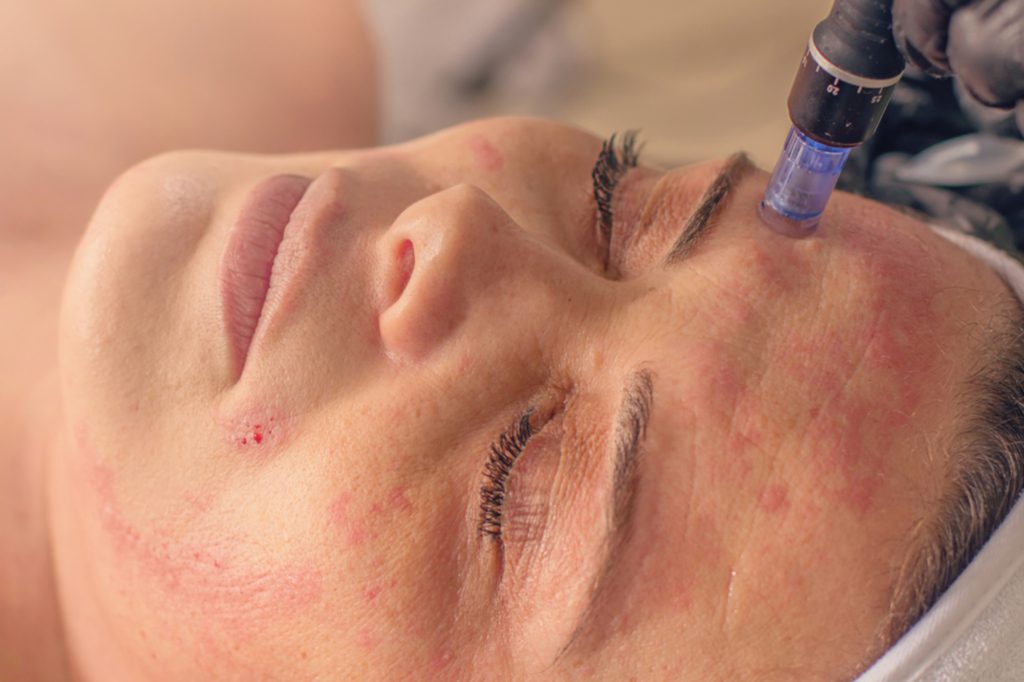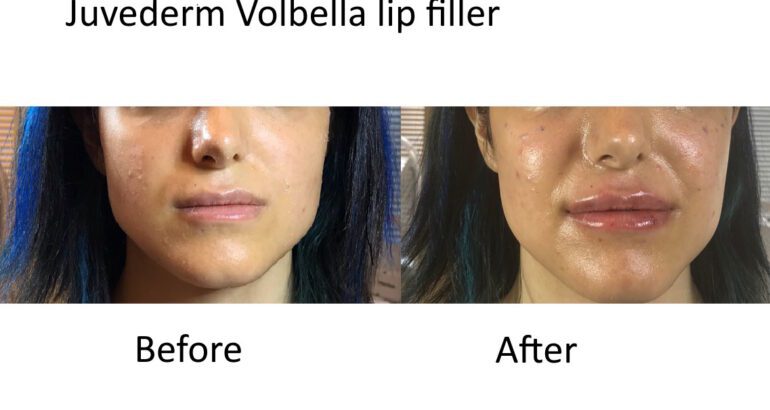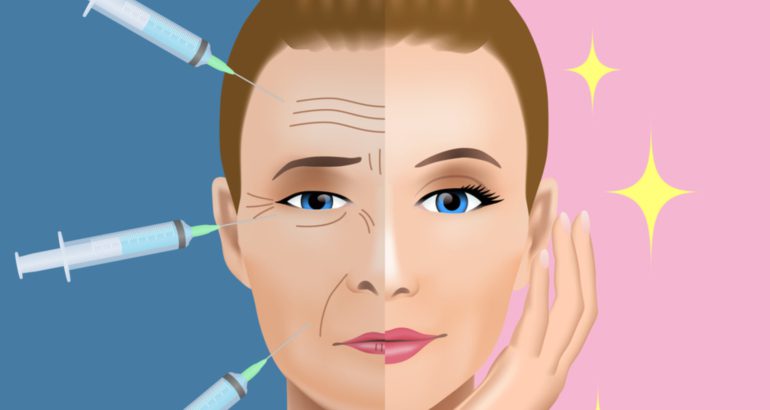What is microneedling?
Microneedling, or collagen induction therapy, is a cosmetic technique using small, sterile needles to induce micro-injuries in the skin. These micro-injuries trigger the body’s innate healing process, fostering enhanced collagen and elastin production. This may lead to a refined skin texture, increased firmness, and a noticeable reduction in the visibility of scars, wrinkles, and other skin blemishes.
Do you have microneedling before and after results?



What machine does the doctor use for microneedling?
Utilizing the FDA-cleared Rejuvapen NXT, we focus on addressing peri-orbital wrinkles. This streamlined process is quick, nearly pain-free, and involves minimal recovery time. The advanced technology of Rejuvapen NXT® ensures remarkable results and economic advantages.
What are the common areas to treat with microneedling?
- Face: Microneedling is a popular treatment for fine lines, wrinkles, acne scars, enlarged pores, and uneven skin tone.
- Neck: This procedure can enhance the texture and firmness of the skin on the neck area.
- Décolletage (Chest): Often utilized to minimize sun damage, fine lines, and wrinkles on the chest area.
- Hands: Microneedling effectively rejuvenates the skin on the hands, reducing the visibility of age spots and fine lines.
- Stretch marks on the abdomen, hands, and legs: This treatment is a viable option for reducing the appearance of stretch marks. These marks, also called striae, develop when the skin undergoes rapid stretching or shrinking, causing the collagen and elastin fibers to break. The process involves creating controlled micro-injuries in the skin, initiating the body’s natural healing process, and encouraging collagen and elastin production. Consequently, this enhances the texture and visibility of stretch marks.
What are the common conditions treated with microneedling?
- Acne Scars: This method aids in enhancing the texture of acne scars by stimulating collagen production and smoothing the skin’s surface.
- Wrinkles and Fine Lines: It effectively reduces the appearance of fine lines and wrinkles, particularly those associated with aging.
- Hyperpigmentation: This technique assists in achieving a more uniform skin tone, reducing the visibility of dark spots and hyperpigmentation.
- Uneven Skin Texture: It addresses concerns about rough or uneven skin texture, resulting in a smoother complexion.
- Stretch Marks: This approach can be employed to refine the appearance of stretch marks by encouraging collagen production in the affected areas.
- Large Pores: It helps minimize the appearance of enlarged pores.It’s important to emphasize that this procedure should only be administered by a trained and licensed professional such as Dr. Anuja Garg. Depending on individual concerns and objectives, it may be complemented with topical serums or additional treatments for enhanced outcomes. We highly recommend using ZO skincare products during and post-treatment. As with any cosmetic procedure, consulting with a qualified healthcare provider or dermatologist is crucial to ascertain if this treatment aligns with your needs and skin type. They can also offer insights regarding potential risks and side effects.
How many microneedling treatments are needed to treat these conditions?
The necessary number of treatments for effectively addressing specific skin conditions can vary based on factors like severity, individual skin type, and the body’s response to treatment. In broad terms:
- Acne Scars: Mild to moderate cases may benefit from 3 to 6 treatments spaced 4 to 6 weeks apart, with more severe scarring potentially necessitating additional sessions.
- Wrinkles and Fine Lines: Typically, 3 to 6 treatments spaced 4 to 6 weeks apart are advised, with long-term maintenance treatments for sustained results.
- Hyperpigmentation: Noticeable improvement often emerges after 3 to 6 treatments spaced approximately 4 to 6 weeks apart, with some individuals potentially requiring ongoing maintenance.
- Uneven Skin Texture: Visible enhancement may be observed after 3 to 6 treatments spaced 4 to 6 weeks apart.
- Stretch Marks: Addressing stretch marks can be more complex, and outcomes may vary. Generally, a series of 3 to 6 treatments with 4 to 6 weeks between sessions is suggested.
- Large Pores: A series of 3 to 6 treatments spaced 4 to 6 weeks apart can aid in reducing the appearance of enlarged pores.
It’s essential to note that individual responses differ, with some experiencing improvement after fewer sessions, while others may require more. Adhering to the advice of a qualified healthcare provider or dermatologist, who can evaluate your specific needs and oversee your progress, is crucial. Additionally, maintenance sessions may be recommended after completing a treatment series to uphold achieved results. Always seek personalized advice and treatment planning from a healthcare professional.
Shall I consider microneedling with or without PRP?
Utilizing Platelet-Rich Plasma (PRP) in conjunction with microneedling involves applying a concentrated platelet solution derived from the patient’s own blood. This combined approach is thought to amplify the treatment’s advantages. Let’s examine the differences between microneedling with and without PRP:
Microneedling without PRP
- Operation Principle: Microneedling as a standalone procedure hinges on inducing micro-injuries in the skin to trigger collagen synthesis and foster skin revitalization.
- Advantages: Enhanced skin texture and evenness. Diminished visibility of scars, wrinkles, and fine lines. Minimized pore size. Augmented absorption of topical skincare formulations.
- Recovery Period: Slight redness and swelling are typical post-treatment, usually resolving within a day or two.
- Pricing: Typically, the solo microneedling treatment tends to be more economical compared to the combined approach involving PRP.
Microneedling with PRP
- Mechanism of Action:
Microneedling induces micro-injuries in the skin.
PRP, abundant in growth factors, is administered to the skin with the belief that these growth factors can further stimulate collagen generation and expedite the healing process. - Benefits:
All the advantages of microneedling in isolation have the potential for enhancement.
Accelerated recovery and healing.
The possibility of heightened collagen production, thanks to the introduction of growth factors. - Recovery Time:
Comparable to microneedling alone, some individuals may experience marginally quicker healing owing to the application of PRP. - Cost:
Microneedling combined with PRP typically entails a higher cost than microneedling itself, primarily due to the added expenses associated with PRP preparation and application.
Choosing Between the Two
- Skin Goals and Concerns: Microneedling is suitable for mild to moderate skin issues. If you have more significant concerns or desire enhanced results, microneedling with PRP is often recommended.
- Budget Consideration: Keep in mind that microneedling with PRP tends to be pricier due to the inclusion of the PRP component. Make sure to factor your budget into your decision-making process.
- Professional Consultation: Consulting with a certified healthcare provider or dermatologist is essential. They can evaluate your specific skin condition, discuss your objectives, and recommend the most suitable treatment plan.
Ultimately, both microneedling options – with or without PRP – can be effective treatments. The choice hinges on individual factors and desired outcomes. Consulting with a qualified professional is crucial to determine the best option for you.
How does PRP enhance the collagen production?
Platelet-rich plasma (PRP) is rich in platelets, minuscule blood cells pivotal for the body’s innate healing process. When administered to the skin during treatment, PRP fosters collagen production through various mechanisms:
Growth Factor Release: PRP contains platelet-derived growth factor (PDGF), transforming growth factor-beta (TGF-β), vascular endothelial growth factor (VEGF), and insulin-like growth factor (IGF), crucial for cell repair and regeneration.
Stimulating Cell Proliferation: PRP’s growth factors spur fibroblasts, responsible for generating collagen and other extracellular matrix components, leading to increased collagen synthesis.
Angiogenesis: VEGF in PRP encourages new blood vessel formation, enhancing oxygen and nutrient delivery to the skin and supporting collagen production.
Matrix Synthesis: PRP prompts extracellular matrix component production, including collagen, elastin, and hyaluronic acid, crucial for skin structural integrity and elasticity.
Anti-Inflammatory Effects: PRP houses anti-inflammatory proteins, creating an environment conducive to collagen production by reducing skin inflammation.
Accelerated Healing: PRP’s growth factors expedite tissue regeneration, including collagen fibers, expediting the healing process.
In summary, PRP acts as a natural catalyst for the body’s collagen production. When combined with microneedling or other treatments, it can lead to heightened skin rejuvenation, refined texture, and diminished fine lines, wrinkles, and scars. It’s important to note that PRP’s effectiveness may vary based on factors like PRP quality and concentration, as well as application technique. Consulting with a certified healthcare provider or dermatologist is pivotal for achieving optimal results.
How does collagen help with skin tone?
Collagen, an inherent structural protein found in the skin and various connective tissues, plays a pivotal role in upholding skin tone, texture, and elasticity. Here’s how collagen contributes to skin tone:
Provides Structural Support: Collagen fibers create a supportive network in the skin’s middle layer, the dermis, ensuring structural integrity and firmness while preventing sagging.
Maintains Skin Elasticity: Collaborating with elastin fibers, collagen imparts elasticity to the skin. Elastin allows for stretching and returning to its original state, while collagen establishes the foundational structure.
Enhances Skin Texture: Collagen fosters a smooth and uniform skin surface. Adequate collagen levels result in a plump, soft, and supple appearance.
Diminishes Wrinkles and Fine Lines: Optimal collagen levels fill the gaps between skin cells, reducing the visibility of fine lines and wrinkles.
Boosts Hydration: Integral to the extracellular matrix, collagen aids in retaining moisture, ensuring well-hydrated skin for a radiant complexion.
Facilitates Wound Healing: Collagen participates in the healing process, offering a scaffold for new tissue growth and supporting granulation tissue formation, which is critical for effective recovery.
Enhances Skin Resilience: Strengthening the skin, collagen fibers fortify it against damage from external factors such as UV rays, pollution, and environmental stressors.
Natural collagen production wanes as we age, resulting in diminished skin tone, elasticity, and firmness. This progression leads to wrinkles, fine lines, and sagging skin. External factors like sun exposure, smoking, and poor diet can expedite collagen breakdown.
To bolster healthy collagen production and preserve skin tone, individuals may consider practices like maintaining a balanced diet rich in collagen-boosting nutrients (such as vitamin C and amino acids), using topical skincare products infused with collagen-enhancing elements, and exploring treatments like microneedling or laser therapy that invigorate collagen synthesis. Consulting with a dermatologist or skincare professional ensures tailored recommendations based on individual skin requirements.
What are the risks involved with microneedling?
Microneedling, when administered by a trained and licensed professional, is generally considered a safe procedure. However, like all cosmetic treatments, it’s important to be aware of potential risks and side effects, which may include:
Redness and Swelling: Mild to moderate redness and swelling are common post-procedure and typically resolve within a day or two.
Bruising: In some cases, bruising may occur, particularly in individuals with sensitive skin or those prone to bruising.
Pain or Discomfort: The process involves fine needle punctures, which can cause discomfort. Topical numbing creams are often applied to minimize pain.
Skin Sensitivity: Those with sensitive skin may experience heightened sensitivity following the treatment, which usually subsides shortly.
Infection: While rare, there is a small risk of infection if proper sterilization procedures are not followed.
Pigment Changes: Microneedling can stimulate melanin production, potentially leading to temporary hyperpigmentation, especially in individuals with darker skin tones.
Scarring: Incorrect procedure execution or inadequate post-treatment care may pose a risk of scarring.
Allergic Reactions: Some individuals may have allergies to topical products or serums used during or after the procedure.
Acne Flare-Up: In rare cases, individuals with acne-prone skin may experience a temporary exacerbation following the treatment.
Herpes Simplex Virus Reactivation: Those with a history of oral or genital herpes face a small risk of reactivation after the treatment.
Post-Inflammatory Hyperpigmentation (PIH): The development of dark spots on the skin after inflammation or injury. It’s more common in individuals with darker skin tones.
Remember, seeking treatment from a qualified and experienced professional, ensuring proper equipment sterilization, and following post-treatment care instructions can greatly minimize the likelihood and severity of these risks.
Before undergoing microneedling or any cosmetic procedure, it is imperative to have a thorough consultation with a licensed healthcare provider or dermatologist. They can assess your suitability for the treatment and offer personalized advice based on your specific skin type and concerns.
How Microneedling PRP and PRP injections help with hair growth?
You can refer to our Hair restoration page for more information. Below is how PRP helps with hair growth.
Hair Follicle Stimulation: PRP’s growth factors and bioactive proteins awaken dormant hair follicles, prompting them to transition into an active growth phase.
Enhanced Blood Circulation: Containing growth factors like vascular endothelial growth factor (VEGF), PRP fosters the formation of new blood vessels, amplifying blood flow to the hair follicles. This supplies them with vital nutrients and oxygen for robust growth.
Cell Proliferation and Specialization:
PRP’s growth factors contribute to cell proliferation and specialization, bolstering the rejuvenation and expansion of hair follicle cells.
Anti-Inflammatory Properties:
PRP houses anti-inflammatory proteins that assist in reducing scalp inflammation, often linked with specific types of hair loss.
Lengthened Anagen Phase:
The anagen phase signifies the dynamic growth period in the hair follicle’s life cycle. PRP injections may extend this phase, resulting in lengthier and denser hair.
It’s crucial to remember that while PRP can prove effective for particular forms of hair loss, its efficacy can vary among individuals. Outcomes may also hinge on factors like the root cause of the hair loss and the individual’s overall health.
Seeking guidance from a qualified healthcare provider or dermatologist is imperative to ascertain if PRP injections are suitable for addressing your specific type of hair loss. They can furnish personalized recommendations and treatment plans tailored to your distinct circumstances.
What kinds of hair loss can be treated using PRP scalp injections and microneedling PRP?
Platelet-Rich Plasma (PRP) therapies, encompassing both PRP scalp injections and microneedling with PRP, have demonstrated potential in addressing various forms of hair loss. Nevertheless, it’s vital to acknowledge that the effectiveness of these treatments hinges on the specific type and root cause of hair loss, as well as individual factors. The following are types of hair loss that may potentially benefit from PRP:
Androgenetic Alopecia (Male and Female Pattern Baldness):
This hereditary form of hair loss is prevalent. PRP scalp injections and microneedling with PRP can stimulate hair growth in individuals affected by androgenetic alopecia.
Alopecia Areata:
Characterized by patchy hair loss due to an autoimmune condition, PRP, while not a primary treatment, has been explored as a supplementary therapy in certain cases.
Telogen Effluvium:
A transient hair loss type triggered by factors like stress or hormonal changes. PRP treatments may expedite hair regrowth in instances of telogen effluvium.
Traction Alopecia:
Resulting from physical strain on hair follicles, often due to tight hairstyles or hair treatments. PRP holds the potential to stimulate hair growth in affected areas.
Certain Forms of Scarring Alopecia:
Permanent hair loss arises from follicular damage. PRP therapies, involving both scalp injections and microneedling with PRP, might be employed alongside other treatments to enhance hair growth in specific cases.
Postpartum Hair Loss:
Temporary hair loss, known as postpartum telogen effluvium, is common after childbirth. PRP treatments may expedite the regrowth of hair in such cases.
Chemotherapy-Induced Hair Loss:
While not typically a primary approach for chemotherapy-induced hair loss, some studies have explored PRP’s potential as a complementary therapy.
It’s crucial to recognize that while PRP treatments can be advantageous for specific hair loss types, they may not yield the same effectiveness for every individual or all types of hair loss. Moreover, individual responses to PRP can vary, and multiple sessions may be required for noticeable results.
Before undergoing any PRP treatment for hair loss, consulting with a qualified healthcare provider or dermatologist is imperative. They can evaluate your condition and provide tailored recommendations based on your circumstances. They can also discuss potential risks, benefits, and anticipated outcomes.
How much is the cost of microneedling?
We offer very attractive pricing for microneedling treatments. It is a non-covered service. You can check pricing and book online at this page.
What other Medical Spa services do you provide?
You can look at our list of medical spa services including Botox, dermal fillers, laser skin resurfacing etc at this page.
Where can I book an appointment for this treatment?
You can visit the book online page to book the appointment online.
About Dublin
Dublin, California, nestled in the picturesque East Bay region, is a vibrant city known for its rich history, thriving community, and picturesque landscapes. Located in Alameda County, Dublin is part of the bustling Tri-Valley area, which includes neighboring cities like Pleasanton and Livermore. Its strategic location, just 35 miles east of San Francisco, makes it an ideal residential hub for commuters.
The city’s history dates back to the late 18th century when it was initially settled by Irish pioneers, lending the city its name. Today, remnants of its heritage can be seen in the quaint downtown area, where historic buildings stand alongside modern amenities, creating a unique blend of old-world charm and contemporary living.
Dublin boasts an array of parks and open spaces, offering residents and visitors ample opportunities for outdoor recreation. The sprawling Dublin Hills Regional Park, with its scenic trails and panoramic views of the Tri-Valley area, is a popular destination for hikers and nature enthusiasts. Additionally, the city is home to the picturesque Alamo Creek Park, providing a serene setting for picnics and leisurely strolls.
Education is highly valued in Dublin, with the city being served by the acclaimed Dublin Unified School District. The district is known for its top-notch educational facilities and dedicated faculty, ensuring a high standard of learning for students of all ages.
Dublin’s cultural diversity is reflected in its vibrant community events and festivals. The city hosts a variety of celebrations throughout the year, bringing residents together to commemorate traditions, arts, and local heritage.
Dublin has experienced steady growth and development in recent years, with a thriving business community and a range of retail and dining options. The Hacienda Crossings Shopping Center offers a plethora of shops, restaurants, and entertainment venues, making it a popular destination for both locals and visitors alike.
Overall, Dublin, California, combines a rich historical legacy with a modern, dynamic community, providing an exceptional quality of life for its residents. With its excellent amenities, strong educational opportunities, and proximity to the Bay Area’s economic centers, Dublin continues to be a sought-after destination for families, professionals, and individuals seeking a vibrant and welcoming hometown.




